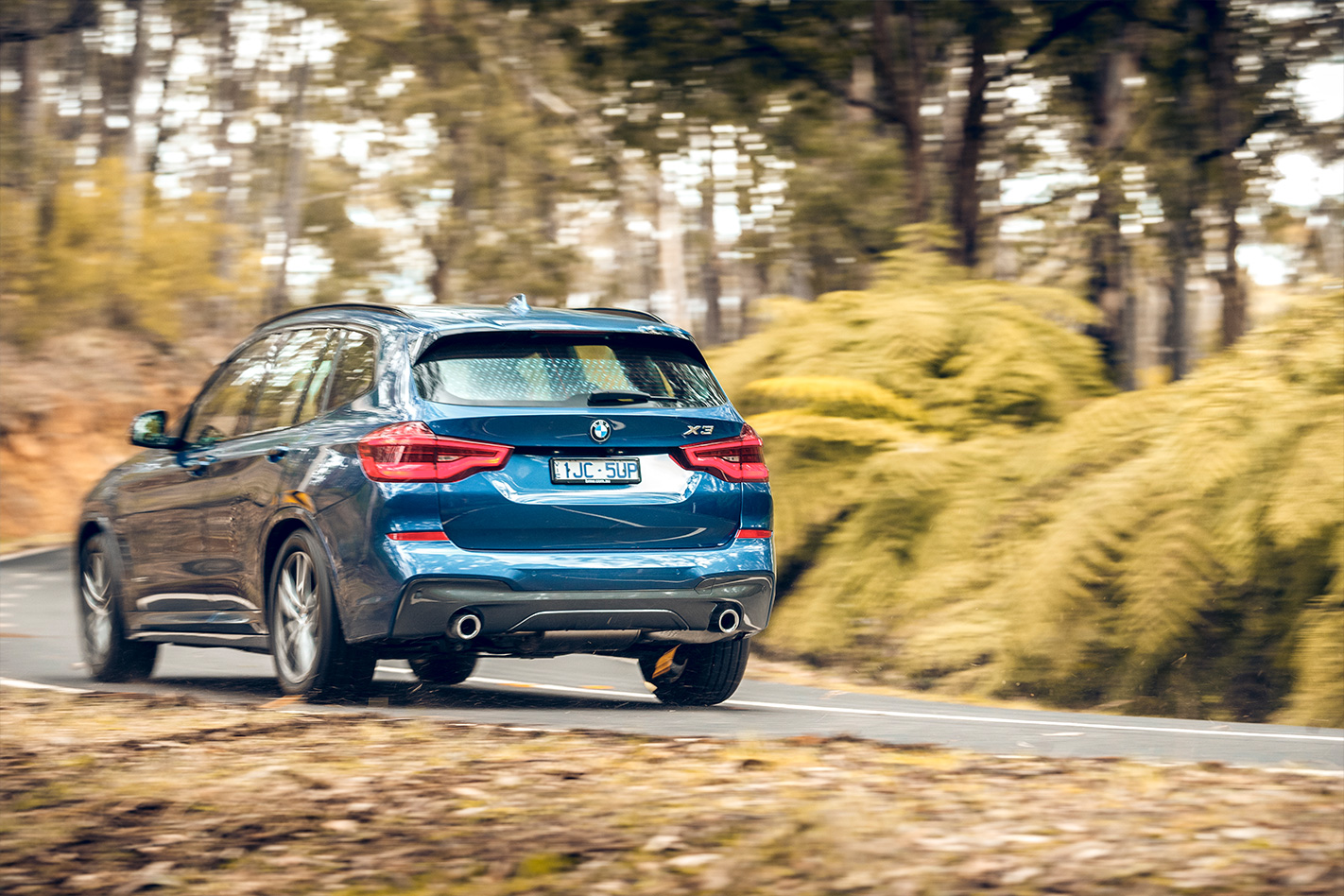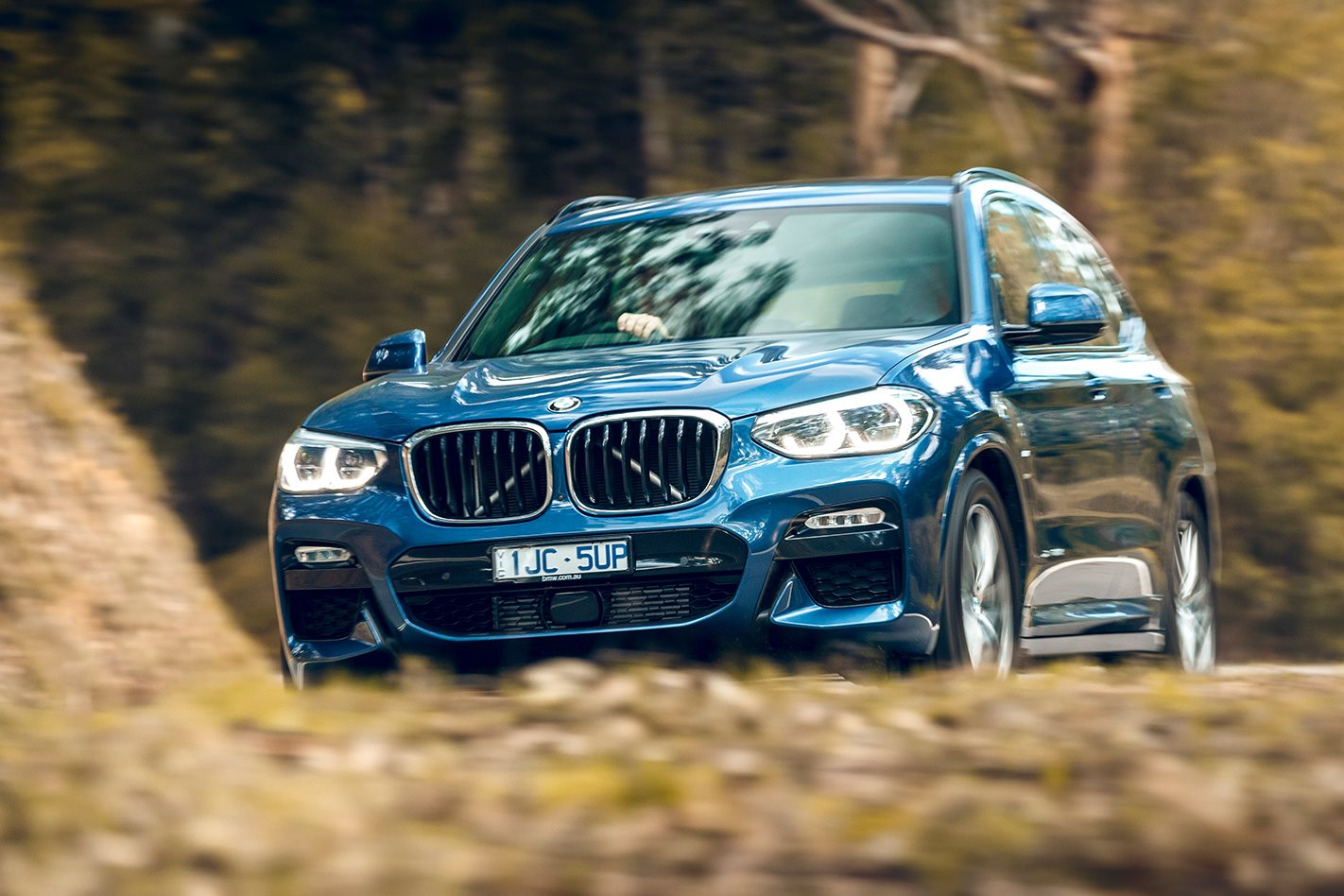
The third-generation BMW X3 medium SUV offers more passenger and cargo space than its predecessor with an attractively styled cabin, and sharp-looking exterior penned by Aussie-born automotive designer Calvin Luk.
It’s available with a choice of enthusiastic, fuel-efficient 2.0- and 3.0-litre turbocharged diesel and petrol engines mated with a slick eight-speed automatic gearbox, with all but one variant offering ‘xDrive’ all-wheel traction.
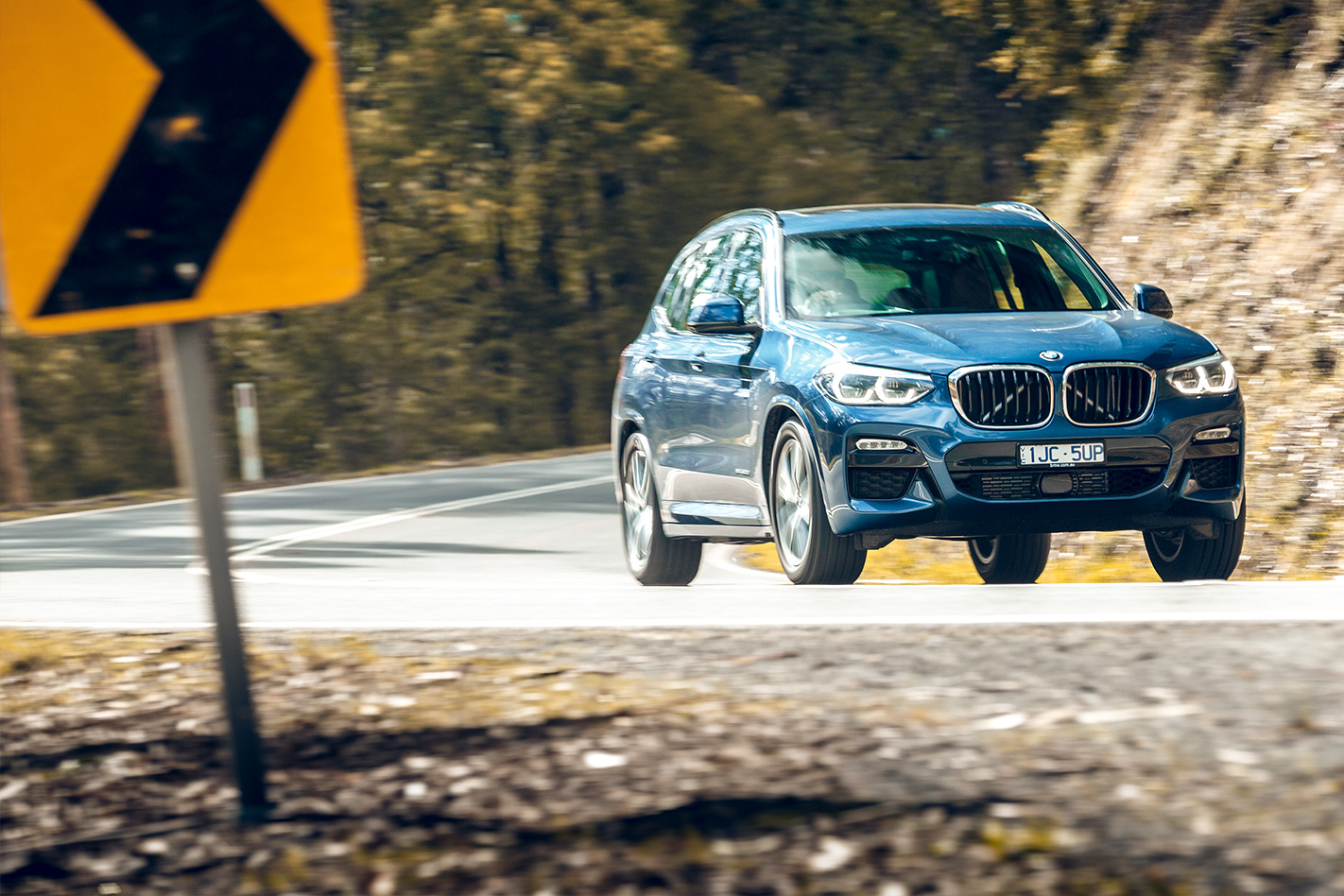
The BMW X3 xDrive20d we’re testing here features the smaller of two diesel powertrains and for a time was the cheapest X3 variant until the introduction of the front-wheel-drive petrol sDrive20i.
VALUE
Priced at $69,900 the xDrive20d is similarly equipped to the entry-level sDrive20i, with its torquey diesel engine and all-wheel-drive system attracting a $3000 premium. It’s $15,000 cheaper than the more powerful xDrive30d diesel, which gains a host of additional features on top of the power boost, many of which are available to the xDrive20d as extra-cost options.
Much of these found their way in to the xDrive20d we tested, which sent its retail price soaring to $88,650.
The 2.0-litre diesel engine has a frugal official combined fuel consumption rating of 5.7L/100km.
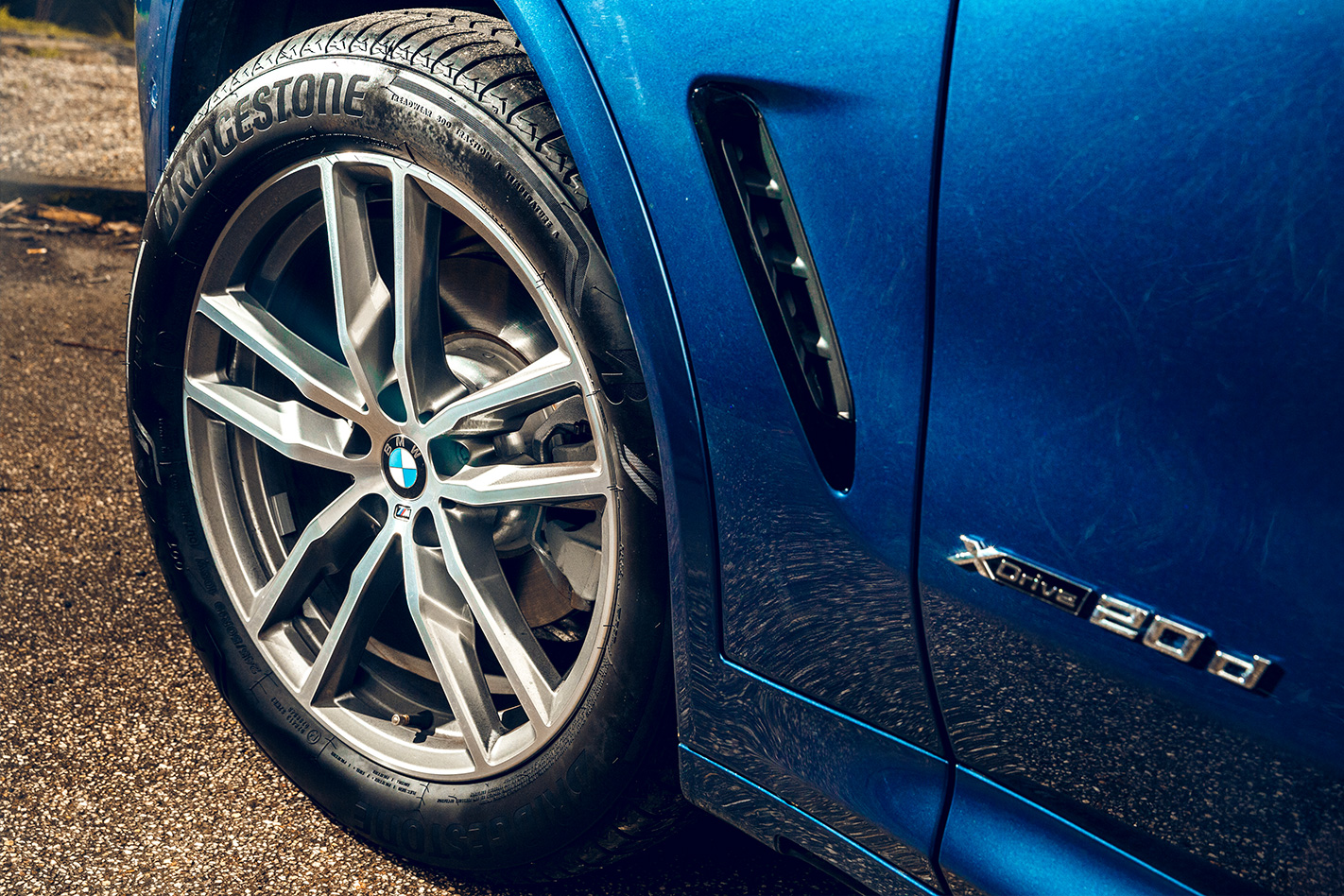
BMWs don’t have a set servicing schedule based on kilometres or time. Instead they work on ‘condition based servicing’ which lets the car’s systems decide when a service is required based on oil levels and wear and tear on individual components. Drivers are alerted that a service is due via a dashboard notification.
BMW owners can take out a prepaid Inclusive Service package which covers basic service costs, including filter replacements and fluid top-ups for the first five years or $80,000km. This costs $1495 for the X3. There’s also a $4400 Service Plus package that includes the replacement of brake pads and discs, wiper blade rubbers and clutch and disc plates.
STANDARD FEATURES
The X3 xDrive20d comes with a broad list of features that you’d expect from a $70,000 SUV, including automatic tailgate, LED headlights, front and rear parking sensors, head-up display, speed-limit info, adaptive cruise control, autonomous emergency braking, digital radio (DAB+), six-speaker sound system, satellite navigation, parking assistant that automatically steers the X3 into a parking spot, sports seats and Connected Drive with real-time traffic info, intelligent emergency call and BMW apps.
All the optional features in the xDrive20d disguised the fact that the standard equipment list is missing quite a few features found in sub-$50k mainstream SUVs, such as Apple CarPlay/Android Auto, seat warmers, panoramic sunroof, multi-element LED lighting, adaptive cruise control with stop and go, and lane-keeping assist.
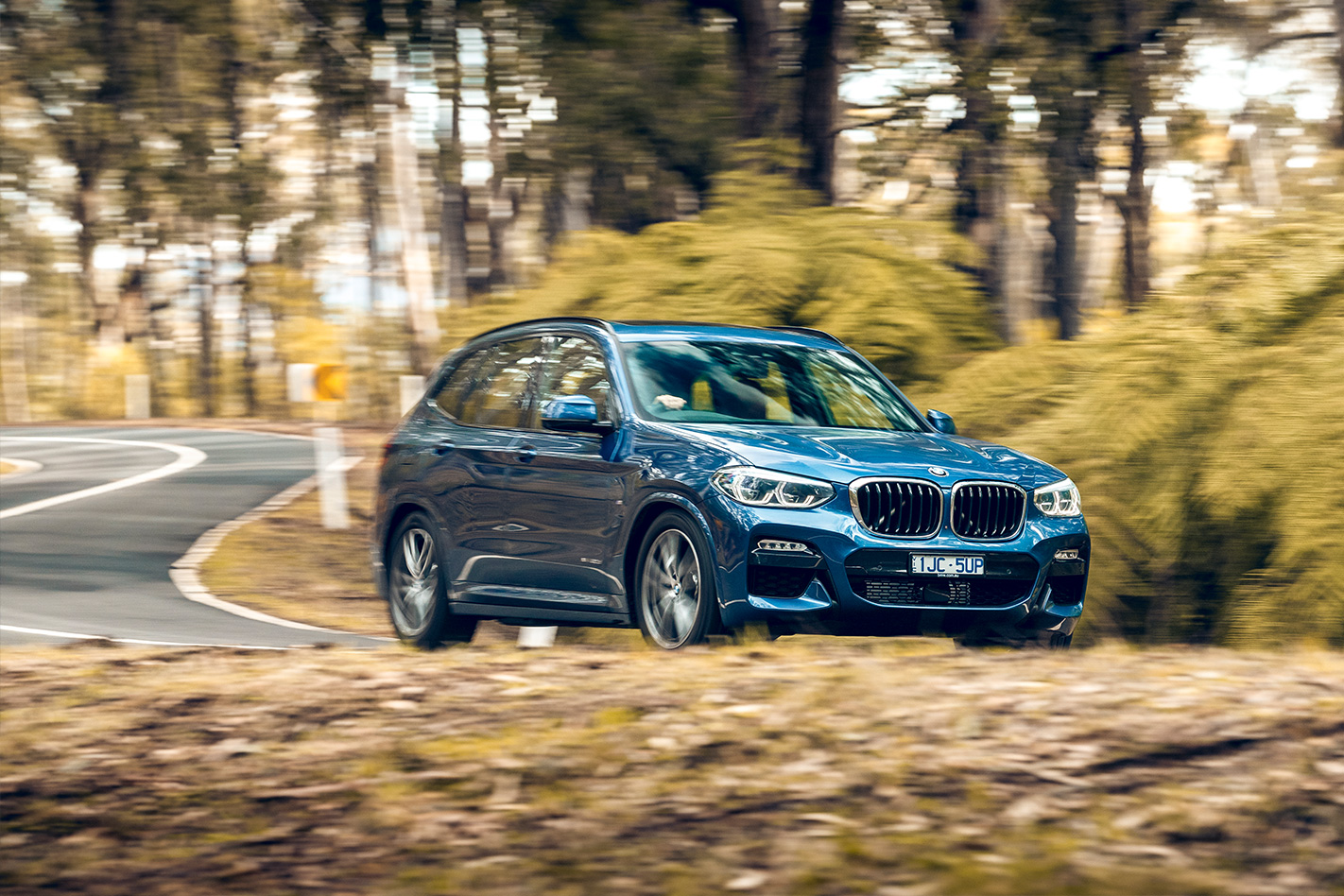
The vehicle we tested had almost $10,000 worth of optional extras, including:
- M-Sport Package that added sporty exterior embellishments, adaptive suspension, LED fog-lights and leather sports steering wheel with paddle shifters ($4550)
- Metallic paint ($1950)
- ‘Vernasca’ leather upholstery with decorative stitching ($2500)
- Panorama sunroof ($3000)
- Ambient interior lighting ($700)
- Driver Assist Plus, with active cruise control with stop and go function, front cross traffic alert, lane keeping assist, and side collision warning ($2800)
- Innovations Package, which includes a 12.3-inch touchscreen, 3D surround view parking camera, adaptive LED headlights, and multifunction digital instrument display ($3250).
SIZE
The BMW X3 is a five-seater medium SUV.
At 4.71m long, it’s 54mm longer than the previous model and is actually bigger than the original X5 large SUV. There’s plenty of rear legroom and its 1.89m width ensures there’s a heap of elbow room up front, and comfortable seating for three adults in the second row.
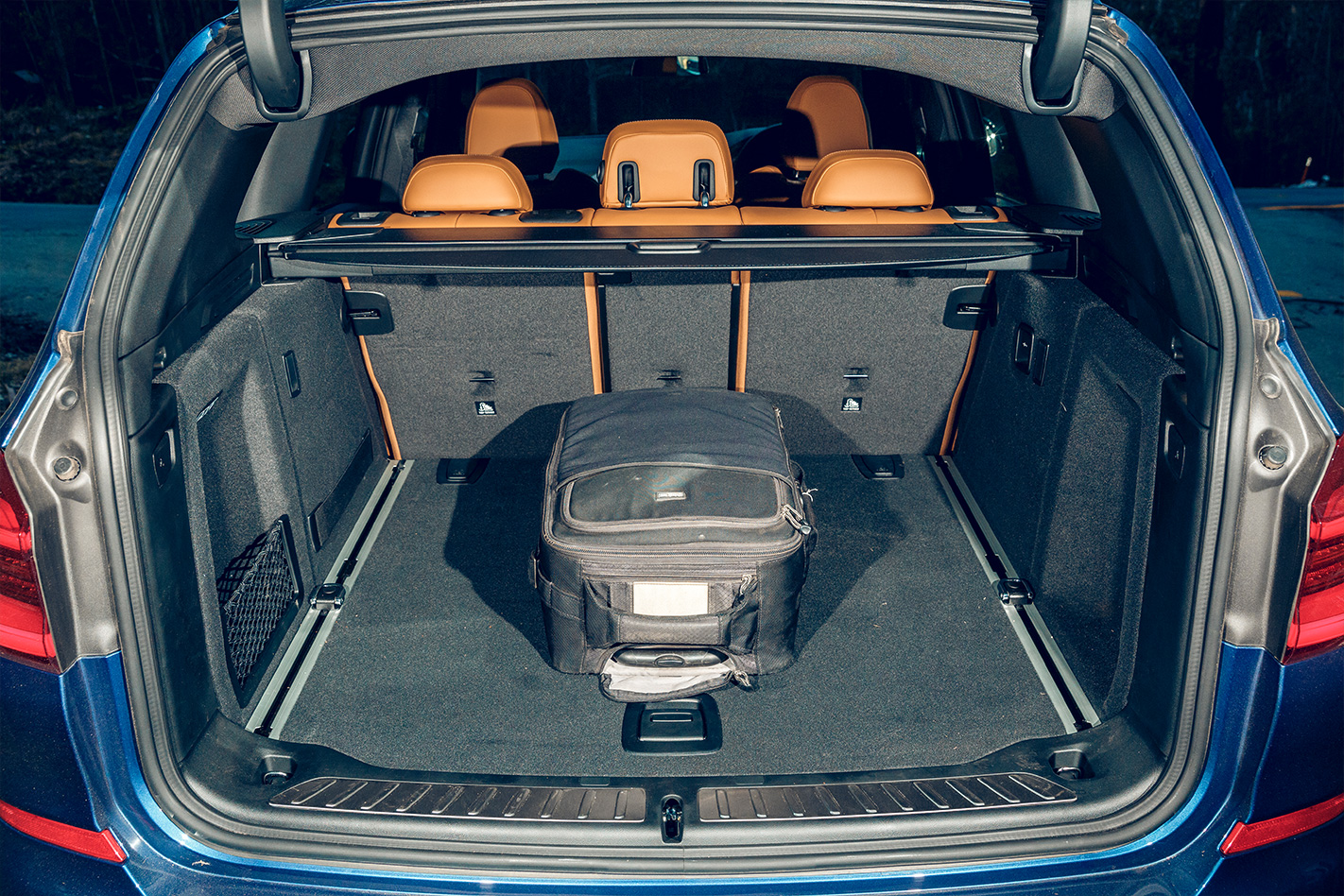
It can swallow 550 litres of luggage behind the back seats, which is the same as the previous model, which extends to 1600 litres with the 40:20:40 split-folding backrests folded down.
SAFETY
The Australasian New Car Assessment Program (ANCAP) awarded the BMW X3 five stars for safety, its maximum, in November 2017.
The X3 xDrive20d is equipped with seven airbags: two directly in front of the driver and passenger; one on the outer side of each front occupant to protect the upper body; driver’s knee airbag, and two airbags on each side to protect the heads and chests of front and outer-rear occupants.
It also comes standard with BMW’s Driving Assistant which includes a camera-based autonomous emergency braking, lane-departure warning and blind-spot monitoring.
COMFORT
The cabin quality is excellent even before you start ticking option boxes. Buttons and controls are intuitively placed, easy to use and pleasant to touch thanks to their metallic coating.
The driving position is good and comfortable over long distances, and the instrument panel is neat and clearly presented – as is the head-up display.
The cabin is practical and spacious with plenty of headroom across both rows, even with the optional panoramic sunroof.
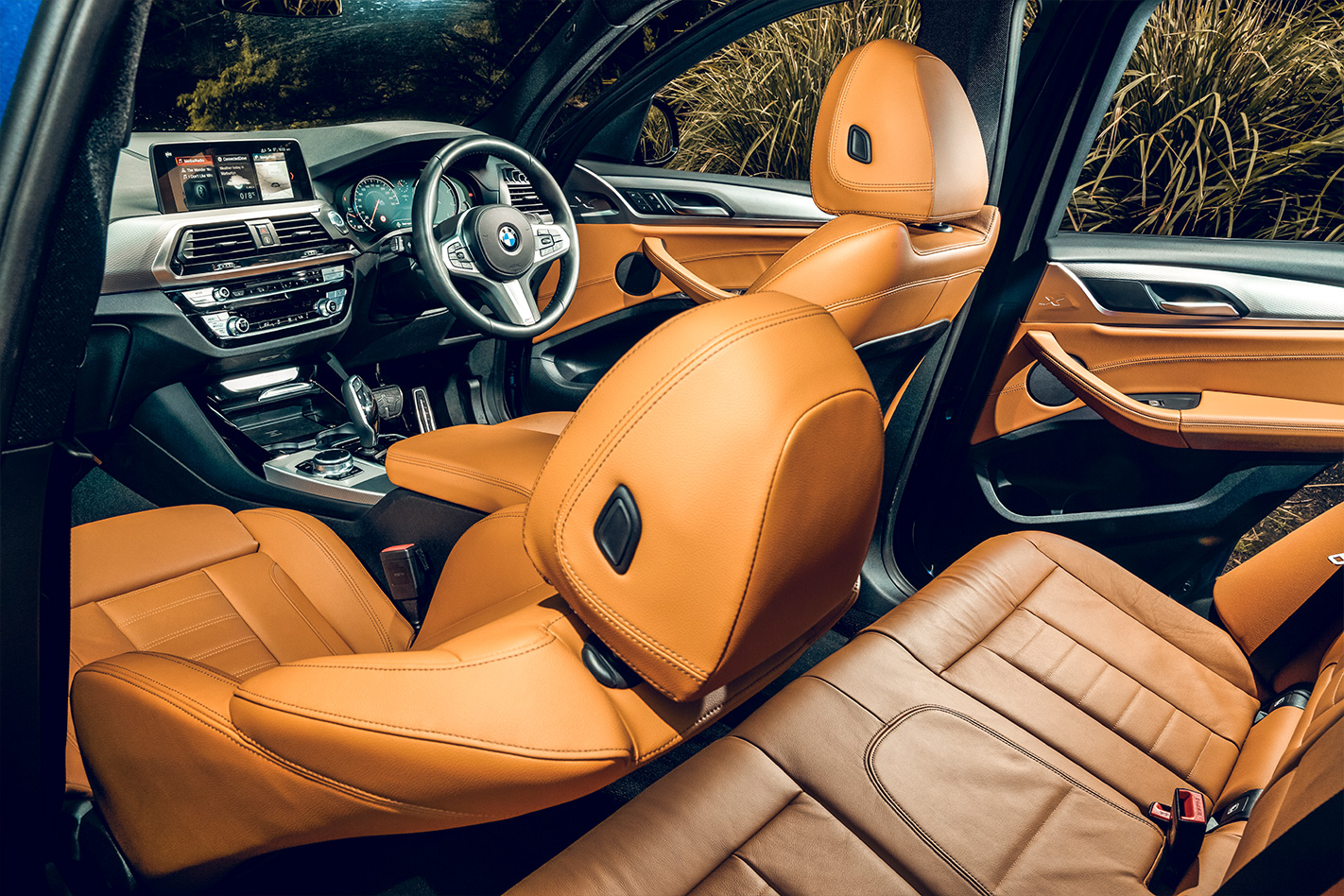
The rear compartment offers good legroom even behind taller drivers and comfortably seats three adults. The rear seat is low, which helps with headroom but hampers forward vision, though the low rear window line nevertheless affords good side vision even for kids. Rear seat passengers have their own air-conditioning vents and controls and a 12-volt socket to charge their devices.
The ride in the standard X3 is taut to the point of being jarring on all but newly laid roads. Our test car was fitted with adaptive suspension that comes with the optional M-Sport Package, which takes the edge off sharp bumps and eases the body’s vertical motion.
Cabin noise is refined with barely perceptible engine noise – an achievement for a diesel – with the din from 19-inch tyres only becoming noticeable beyond 80km/h.
ON THE ROAD
The BMW X3 xDrive20d’s 140kW/400Nm turbodiesel engine is no bolter, but provides enough thrust for urban and highway driving, It has adequate power reserves to keep up with most traffic when asked to climb hills, though there can be a moment’s hesitation when you put the foot down.
The eight-speed automatic gearbox does a good job keeping up with pedal inputs, and if you feel like contributing to the shifting you can flick the gear shifter into manual mode (or use paddle shifters if you have the M-Sport Package fitted).
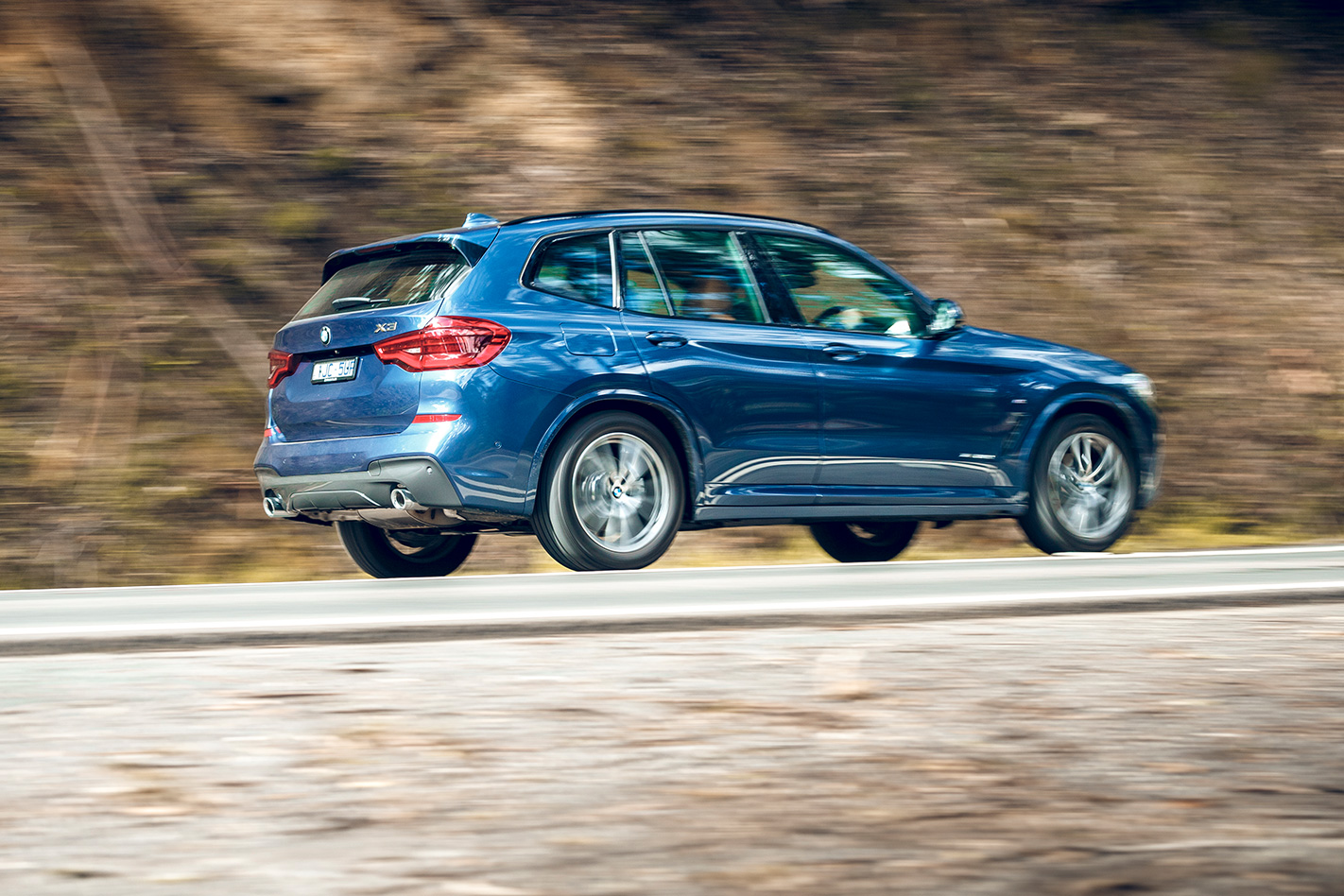
With the adaptive dampers the ride feels composed even on rougher surfaces. It rides particularly well in Comfort mode, and while switching to Sport makes for a firmer ride, it still absorbs bumps well with minimal jarring.
The steering has a nice fluid feel to it in Comfort mode, but in Sport mode it’s unexpectedly more inconsistent meaning you lose feedback on sharper turns. Fortunately you can tailor the driving settings to come to a compromise between Sport’s sharper handling and Comfort’s direct steering.
The xDrive20d is also handy on rougher tracks, with effective all-wheel-drive and a hill-descent control system as standard.
THE VERDICT
While the X3 range is headlined by the powerful 3.0-litre petrol and turbocharged diesels (including the brutish X3 M40i), the comparatively sedate xDrive20d’s emphasis on comfort and family practicality means it’s the one that’ll like appeal most to the average buyer.
The more affordable diesel is enjoyable to drive though, and offers more than enough power for everyday driving. That said, you won’t regret spending a little more on optional adaptive dampers – available separately or as part of the M-Sport Package – which bring an enhanced ride quality that approaches that of the best alternative premium SUVs.
